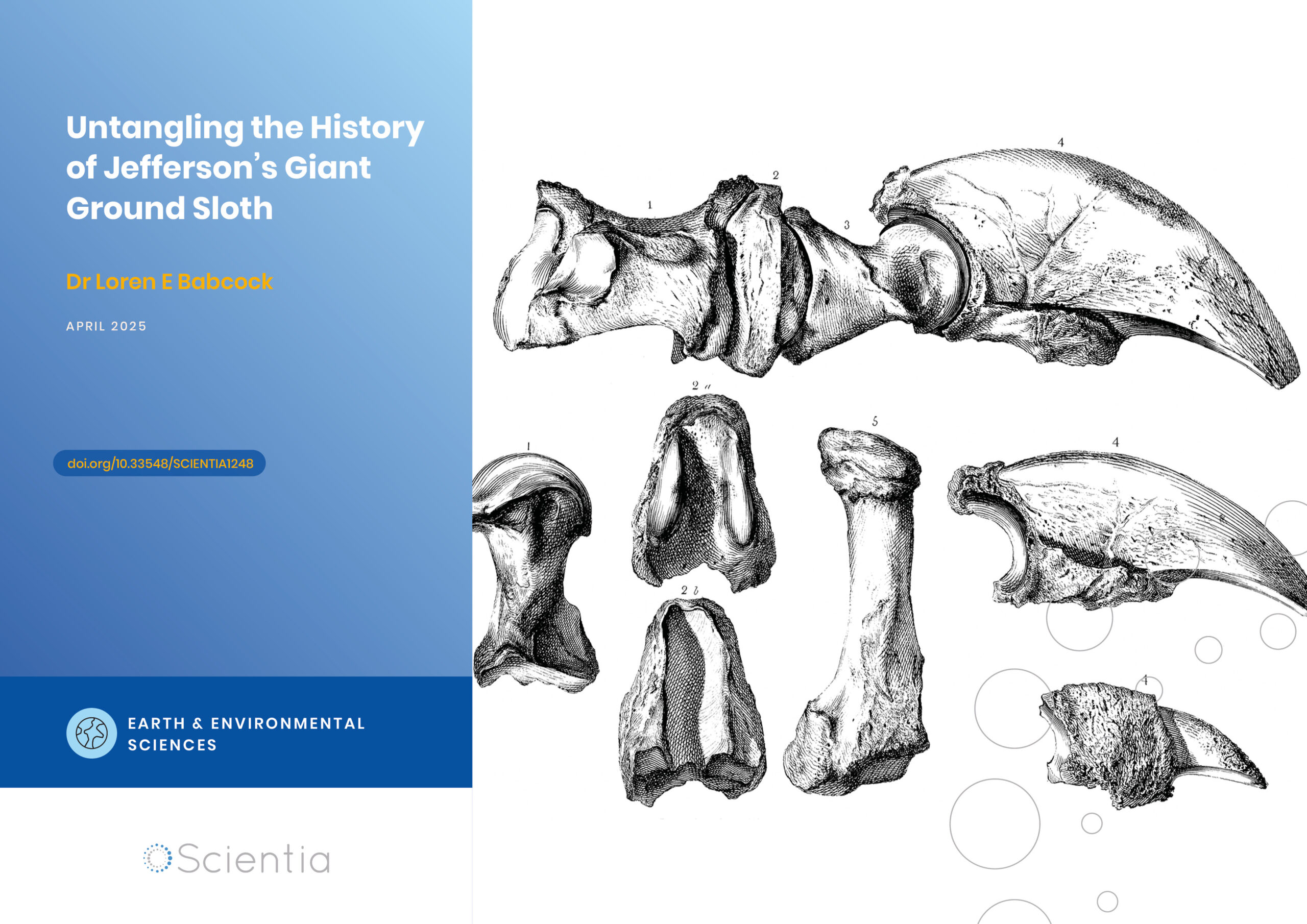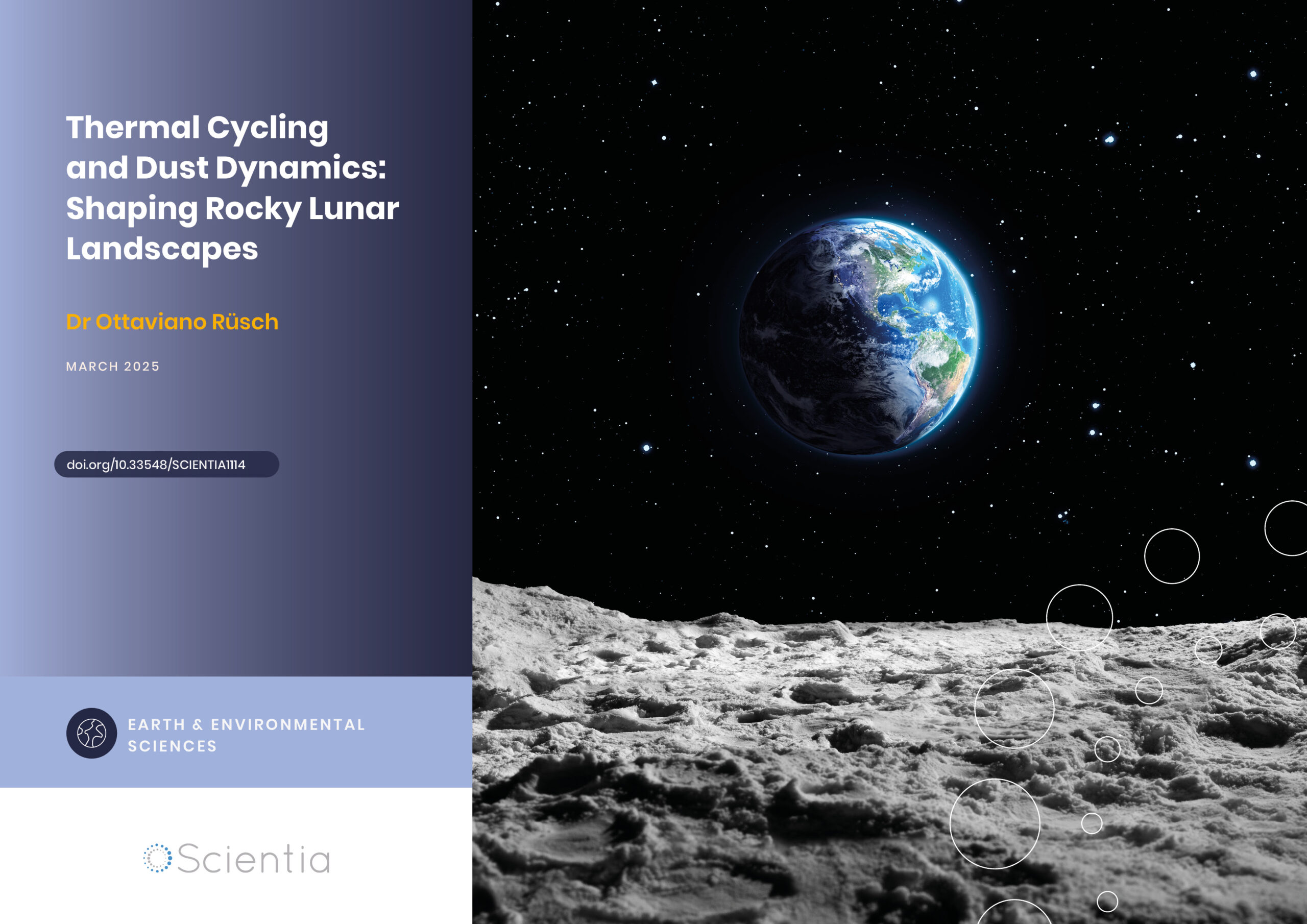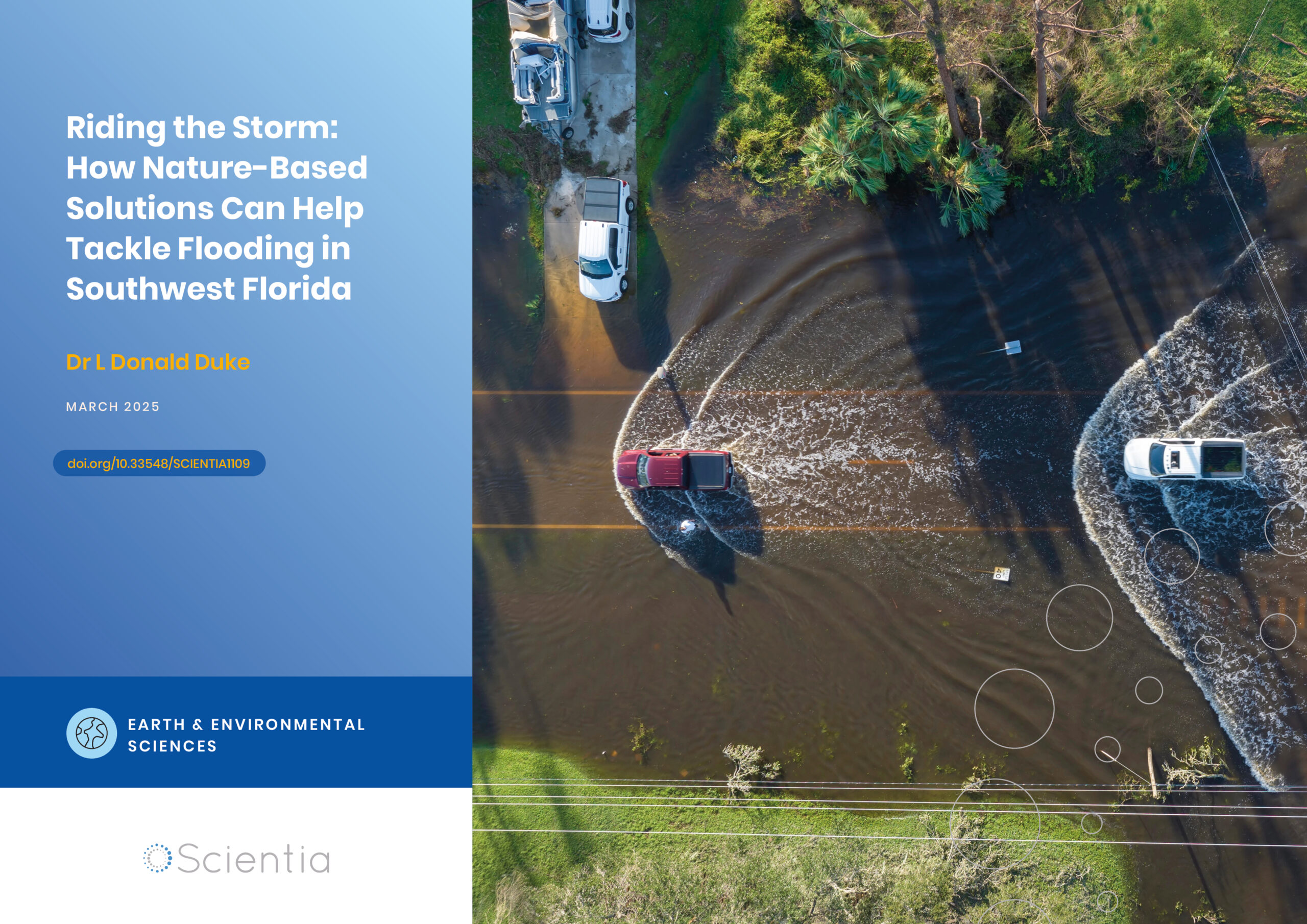Dr Hu Yang – Understanding Circulation Changes in Earth’s Oceans and Atmosphere
Large-scale circulation patterns can be found throughout Earth’s oceans and atmosphere, and play a crucial role in maintaining the stability of regional climates. As the climate warms, researchers find that these patterns are experiencing a fundamental transformation. Using a combination of satellite observations and computer models, Dr Hu Yang at the Alfred Wegener Institute, identifies and explains the mechanisms of these changes. His study offers crucial insights into how both human populations and natural ecosystems will be affected by these transformations – and how they will need to adapt to cope with them.
Circulation Patterns
Earth’s climate is strongly driven by robust circulation patterns in the atmosphere. At the equator, steady heating from the Sun causes warm, moisture-laden air to rise through the atmosphere to form clouds. This effect leads to high levels of rainfall at low altitudes – and is responsible for sustaining tropical rainforests in both the Amazon and Congo basins, and in Southeast Asia.
As this air cools and loses its moisture, it then migrates to higher latitudes, where it eventually sinks back to Earth’s surface in the subtropics – at latitudes roughly ranging between 20° and 35°. This air is responsible for generating hot, arid subtropical climates, including the Sahara, the Australian Outback, and the Sonoran Desert – shared between the US and Mexico. Finally, the air moves back towards the equator as it picks up warms and picks up moisture, completing a cycle named a ‘Hadley cell’.
This pattern not only plays a fundamental role in sustaining the richly diverse ecosystems of Earth’s tropics and subtropics; it also heavily influences the distribution of human populations. While the tropics are home to many of Earth’s largest and most densely populated cities, the arid areas of the subtropics have always been some of the planet’s most sparsely populated regions.
Circulating Ocean Currents
As well as driving climate variations on land, atmospheric circulation is also strongly connected to circulation patterns in the ocean. Crucially, the subtropical regions, where relatively cool, dry air sinks back to the surface, define the position of subtropical high-pressure systems, and the anticyclonic subtropical ocean circulation, or ‘subtropical ocean gyres’.
At the western boundary of each of these gyres, the western boundary currents are responsible for transporting large amounts of heat from the tropics, creating milder, wetter climates in the mainland regions adjacent to them. Examples of this can be seen in the Gulf Stream in the North Atlantic; the Kuroshio Current in the North Pacific; and the Eastern Australian Current in the South Pacific.
Conversely, currents on the eastern edges of subtropical gyres transport relatively colder water from higher latitudes, creating colder, drier climates on the nearby mainland. Yet at the same time, they can also bring an upwelling of nutrients from the ocean floor, which sustain some of Earth’s richest marine ecosystems. This can be seen in the California Current of the North Pacific, the Peru Current in the South Pacific, and the Benguela Current in the South Atlantic.
All of these circulation patterns contribute to generating the present-day climate zones. Inevitably, however, climate change appears to be driving profound transformations. Satellite observations over the past few decades reveal that the tropical belt surrounding the equator has been expanding towards higher latitudes, while large-scale ocean gyres have been migrating away from the equator.
These changes could have immense consequences – both for natural ecosystems, and for many millions of people. Through their research, Dr Hu Yang and his colleagues at the Alfred Wegener Institute aim to identify and decipher the mechanisms of these changes – and to predict the changes to the oceans and atmosphere they will likely trigger in the future.

Simulations and Satellite Records
To achieve this goal, Dr Yang and his colleagues have two vital tools at their disposal. Firstly, they use observations taken by satellites, which have been collecting consistent, reliable streams of data since the early 1980s. When studying the ocean, one particularly important observation is the Sea Surface Height, which is assessed by measuring the time it takes for radar pulses from satellites to be bounced back by the ocean’s surface.
Although the height variations generated by ocean currents are extremely subtle – typically less than a metre – these measurements provide key clues as to where they are positioned, and how fast they are moving. In addition to Sea Surface Height, Sea Surface Temperature is assessed by measuring the intensity of infrared light emitted from the ocean surface.
The second tool Dr Yang uses to make his assessments is climate modelling, which incorporates the latest physical equations to virtually recreate circulation patterns within computer simulations. By accounting for potential future changes to carbon emissions from human activity, this technique can be used to examine how the ocean gyres and Hadley circulation behave under various amounts of carbon emissions. Subsequently, it can be used to predict the shifts in regional climates that may result from these changes. These independent lines of evidence consistently reveal that the large-scale ocean circulation patterns are drifting towards higher latitudes in response to climate change.
Warming in the Subtropics
In previous studies, researchers have linked a poleward shift in both oceanic and atmospheric circulation patterns with complex atmospheric processes. Human-induced changes in atmospheric concentrations of greenhouse gases, aerosols and ozone are believed to contribute to the circulation shift. A number of theories have been put forward to explain why these shifts are happening. Some researchers have concluded that they may not be driven by greenhouse gas emissions after all, but are instead influenced by natural variabilities in climate.
Through their research, Dr Yang and his colleagues show that this is not likely to be the case. They propose that a relatively faster warming subtropical ocean is the key driver for the circulation displacement. This subtropical ocean warming is a robust response to human-induced global warming. To explain why, Dr Yang uses the analogy of plastic pollution. Because of the influence of large-scale subtropical gyres, the distribution of this pollution isn’t uniform, but collects in certain areas, such as the Great Pacific garbage patch. The positions of these accumulations aren’t a coincidence; rather, they occur at ‘convergence zones’, which arise at the boundary between prevailing westerly winds and the trade winds.
As Dr Yang shows, this same behaviour is also driving disproportionate warming in the subtropics, by transporting excess heat generated closer to the poles and equator into subtropical latitudes. The effect has important consequences for the ocean’s temperature distribution – increasing the temperature difference between subtropical and mid-latitude regions, while decreasing the difference between the tropics and subtropics. The changes in the temperature gradient profile, which is the fundamental ‘fuel’ of planetary circulation, eventually causes the large-scale circulation pattern to migrate.
An Expanding Tropical Belt
For the atmosphere, the most striking consequence of this trend will be a wholesale expansion of the tropics. As the subtropics become warmer, air within the higher-altitude branch of the Hadley cell will not cool down as quickly, allowing it to reach higher latitudes before sinking back to Earth’s surface. In turn, there will be a poleward shift in the arid conditions currently only found in the subtropics.
If this hypothesis is correct, it could lead to hotter, drier conditions in regions including the Mediterranean, California, and Australia – which are already recording an increase in the frequency and severity of droughts and wildfires. In the decades to come, such a shift towards Sahara-like conditions in these regions could completely reshape both the natural ecosystems of these regions, and the distributions of human populations.
To accommodate the expanding tropics, weather patterns currently found at higher latitudes would also need to shift towards the poles. This could bring about widespread changes to regional climates – affecting behaviours including precipitation and cloud formation, and the paths and shapes of fast air currents called jet streams.

Poleward Circulation Shifts
In the oceans, Dr Yang’s results point to a poleward shift in the centres and boundaries of five subtropical gyres. This is already leading to the transformation of some marine ecosystems, like the collapse of local cod populations in the Gulf of Maine, resulting from shifting flows in the Gulf Stream. In the future, such shifts could bring about broad changes to the regional climates of the lands adjacent to these currents.
Similar patterns can be clearly seen if we turn back to previous periods of warming, in Earth’s more distant past. From analysis of sediments on the ocean floor, researchers have determined that during previous ice ages, occurring within the past 800,000 years, the Agulhas current (the western boundary of the southwest Indian Ocean) lay roughly 750 kilometres closer to the equator. Conversely, around 100 million years ago, Earth was warm enough for Antarctica to remain ice-free. While the continent today receives very little precipitation, fossil records show that it was at least partially covered by temperate rainforests during this time.
From this evidence, it becomes clear that the effects of climate change on ocean circulation may transform the face of our planet, if human emissions aren’t dramatically reduced in the near future. By drawing on climate models, future studies could build on Dr Yang’s results to gain important insights into how these changes might unfold.
Understanding Future Changes
Dr Yang points out that all of human civilisation has developed over a period of relatively stable climate. By growing accustomed to robust circulation patterns in the oceans and atmosphere, billions of people have managed to thrive in a diverse array of regional climates, and continue to depend on reliable patterns in precipitation, temperature, wind, and ocean currents.
Dr Yang’s results paint a stark picture of how this stability is being threatened by climate change. Shifting circulation patterns are not only bringing extreme weather events to regions that have very rarely experienced them before; they are also triggering fundamental shifts in regional climates – threatening both natural ecosystems and human populations.
In this fast-changing landscape, Dr Yang hopes that his results will enable researchers to better understand how shifting circulation patterns are affecting our planet. In turn, this may provide communities with the vital guidance they need to effectively prepare for and mitigate the changes to come.
SHARE
DOWNLOAD E-BOOK
REFERENCE
https://doi.org/10.33548/SCIENTIA789
MEET THE RESEARCHER

Dr Hu Yang
Climate Sciences Division
Alfred Wegener Institute
Helmholtz Centre for Polar and Marine Research
Bremerhaven
Germany
Dr Hu Yang completed his PhD in Environmental Physics at Bremen University in 2016. Before that, he achieved a BSc in Marine Science in 2010, and an MSc in Physical Oceanography in 2012 from the Ocean University of China. After graduating with his PhD, Dr Yang started his current position as a Postdoctoral Researcher at the Alfred Wegener Institute, Helmholtz Centre for Polar and Marine Research, in Bremerhaven, Germany. His widely varied research interests include climate dynamics, sea-level change, and climate change in past geological eras. To gather his results, he is particularly focused on combining observations with the latest computer simulations. Dr Yang’s important discovery of a poleward shift in several major ocean currents, and interpretation of tropical expansion have now gained widespread recognition, and have been referenced in the latest IPCC report, and reported by over 100 media outlets, including The Washington Post, CBC and Der Spiegel.
CONTACT
E: hu.yang@awi.de
W: https://huyang.mystrikingly.com
KEY COLLABORATORS
Professor Gerrit Lohmann, Climate Sciences Division, Alfred Wegener Institute, Helmholtz Centre for Polar and Marine Research in Bremerhaven, Germany
Dr Monica Ionita, Climate Sciences Division, Alfred Wegener Institute, Helmholtz Centre for Polar and Marine Research in Bremerhaven, Germany
Dr Qiang Wang, Climate Sciences Division, Alfred Wegener Institute, Helmholtz Centre for Polar and Marine Research in Bremerhaven, Germany
Dr Xiaoxu Shi, Climate Sciences Division, Alfred Wegener Institute, Helmholtz Centre for Polar and Marine Research in Bremerhaven, Germany
Dr Evan J. Gowan, Department of Earth and Environmental Sciences, Kumamoto University, Japan
Dr Jian Lu, Atmospheric Sciences and Global Change Division, Pacific Northwest National Laboratory, USA
Dr Jiping Liu, Department of Atmospheric and Environmental Sciences, University at Albany, Sate University of New York, USA

REPUBLISH OUR ARTICLES
We encourage all formats of sharing and republishing of our articles. Whether you want to host on your website, publication or blog, we welcome this. Find out more
Creative Commons Licence (CC BY 4.0)
This work is licensed under a Creative Commons Attribution 4.0 International License. 
What does this mean?
Share: You can copy and redistribute the material in any medium or format
Adapt: You can change, and build upon the material for any purpose, even commercially.
Credit: You must give appropriate credit, provide a link to the license, and indicate if changes were made.
SUBSCRIBE NOW
Follow Us
MORE ARTICLES YOU MAY LIKE
Dr Loren Babcock | Untangling the History of Jefferson’s Giant Ground Sloth
In the spring of 1796, workers mining saltpetre in a western Virginia cave unearthed several unusual bones. This would launch the scientific study of extinct animals in North America and connect one of America’s founding fathers to the early development of palaeontology. Some of these mysterious bones eventually made their way to future US President Thomas Jefferson at his Monticello estate. Dr Loren Babcock from The Ohio State University’s School of Earth Sciences has conducted an extensive review of the complex naming history of this iconic extinct animal. His research untangles over 200 years of inconsistent scientific terminology and establishes the definitive nomenclatural history of what would become known as Megalonyx jeffersonii.
Dr Mojtaba Enayati | Turning Trash into Treasure: Recycling PET Waste with Catalysts from PET Labels
Plastic pollution has become a critical environmental problem, with polyethylene terephthalate (PET) plastic widely used in food and beverage packaging being a major contributor. Dr Mojtaba Enayati from Troy University’s Center for Materials and Manufacturing Sciences (CMMS) is leading innovative research aimed at utilising the labels from PET water bottles as an environmentally friendly and cost-effective catalyst for chemically recycling PET waste into valuable monomers and other value-added materials. This innovative work provides an elegant solution for recycling PET by sourcing key components from the PET bottles themselves.
Dr Ottaviano Rüsch | Thermal Cycling and Dust Dynamics: Shaping Rocky Lunar Landscapes
The Moon’s airless surface is constantly bombarded by micrometeoroids, cosmic rays, and extreme temperature swings. These harsh conditions gradually break down rocks and create the fine-grained lunar soil known as regolith. Dr Markus Patzek and Dr Ottaviano Rüsch at the University of Münster are leading a team of researchers (known as the Precious Space Team) who are uncovering new details about how different types of lunar rocks respond to thermal stress and how dust behaves on boulder surfaces. Their work sheds light on the complex processes that shape airless planetary bodies over time.
Dr L Donald Duke | Riding the Storm: How Nature-Based Solutions Can Help Tackle Flooding in Southwest Florida
Florida grapples with mounting challenges related to inland flooding due to heavy precipitation, along with coastal flooding from rising sea levels and coastal storms. One important approach to address precipitation-originating flooding is to embrace land use practices runoff management in the upstream portions of at-risk watersheds, where sustainable design can relieve the pressures on drainage systems from continuing dense urban development in the low-lying Florida landscape. Dr L Donald Duke, from The Water School at Florida Gulf Coast University, plays a pivotal role in this endeavour. His work encompasses creating and evaluating flood-resilient land use practices and planning to manage stormwater runoff on the watershed scale.





